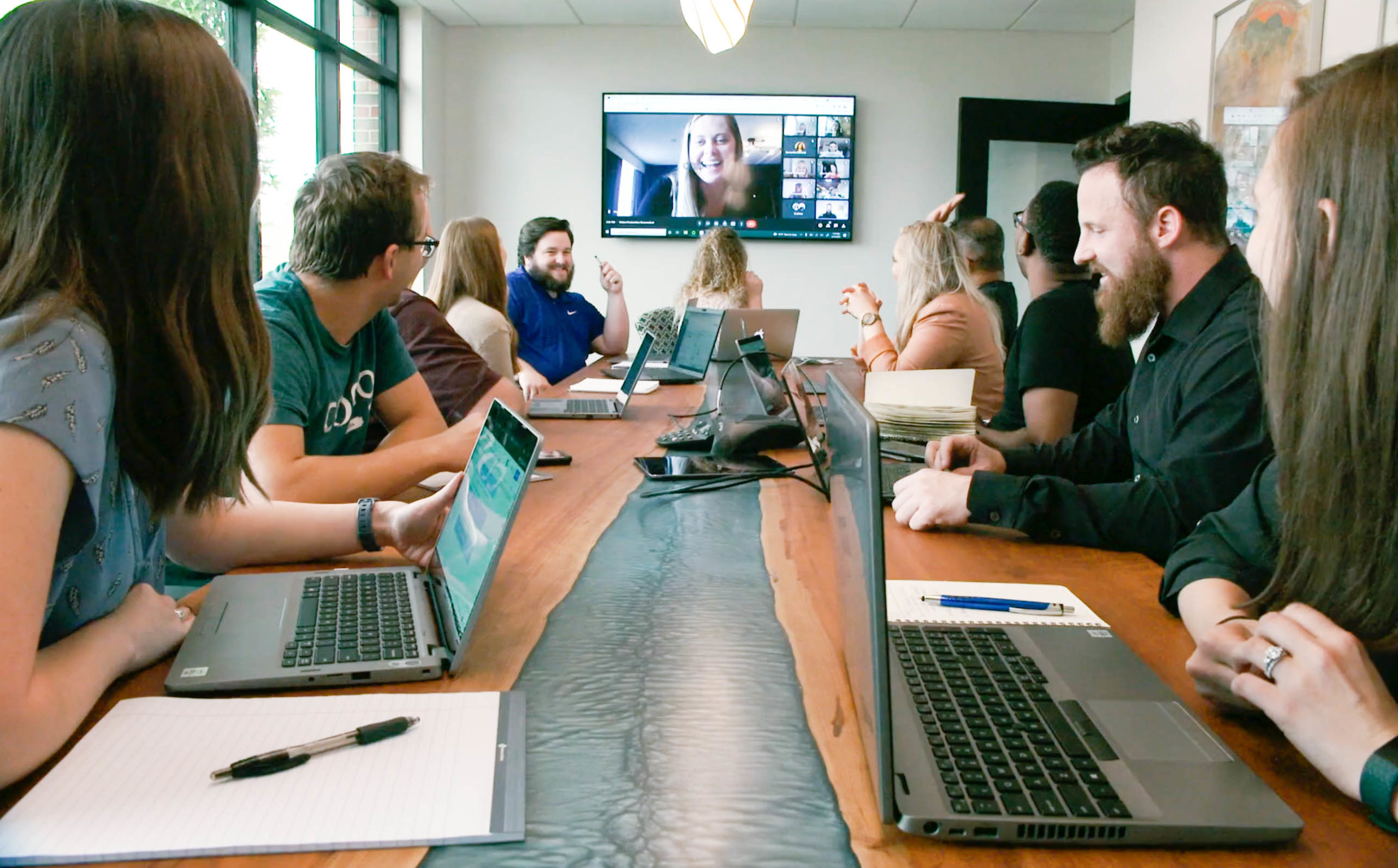Custom content marketing is key to achieving long-term brand success. But, content creation can be expensive and time-consuming. A content amplification strategy allows brands to do more with less, maximizing the return on investment.
In this article, you’ll learn how to create an impactful content amplification strategy that expands reach and extends content shelf life.
Why You Need a Content Amplification Strategy
Content amplification can build an authoritative voice for brands in any industry, from CPG to finance to B2B. For more complex industries, it is an opportunity to establish thought leadership and position a brand as a trustworthy educational resource.
Alternatively, content can be all about entertaining the consumer – driving brand affinity and engagement. Whether you’re amplifying successful content, refreshing pre-existing content or partnering with a trusted third party to leverage their resources and authority – it all comes down to finding the ideal intersection between brand goals and consumer value
Building a Holistic Content Marketing Plan
To begin crafting a strategic content marketing plan that satisfies both the brand and its consumers, follow these four steps.
#1 – Establish strategic alignment on content goals and production strategy
Begin by putting together a comprehensive brief with the client that addresses:
- The brand’s core business and marketing objectives
- The brand’s content creation plans for the year to support these goals
Once you understand the upcoming content pipeline, find ways to incorporate major initiatives, such as custom research studies, company highlight videos, or downloadable white papers, into the paid content marketing strategy.
#2 – Analyze the existing content library
Next, look at the brand’s current content arsenal. What assets can be easily refreshed and repurposed? This decreases net new creative production needs, while making the most of high-value assets. To identify the best content pieces without bias, start by analyzing pre-existing organic metrics.
- What content formats are driving the highest reach and engagement on social media?
- What long-form content pieces are generating the most downloads, backlinks, or shares on your website?
After understanding what great pieces already exist, you can refresh, amplify, and distribute them to more people within their audience groups.
#3 – Partner with publishers for net new content opportunities
After understanding what content is currently at your disposal, identify gaps to fill by tapping into strategic publisher partnerships.
- Where is there competitive white space for the brand to own their message?
- Which channels are the brand’s competitors underutilizing?
- Where is the target audience most active and reachable?
Leverage publishers to help create the most engaging and interactive assets possible. Some creative content formats we have explored include immersive articles, Instagram ‘meme’ Reels, podcast segments, animated videos, recipe blogs, co-branded national polls, and e-newsletter sponsorships – just to name a few.
#4 – Ensure content provides authentic value
Identify the key messages, whether content families or thematic pillars, to find a valuable brand story. Also consider what content formats best communicate different types of information, as well as different target audience segments. For instance, a research survey with heavy statistical data may be best suited for an infographic, whereas a webinar may be better suited for a sizzle reel video.
Remember these four guiding principles to create authentic marketing content:
- Provide a consumer-centric, not product-focused experience
- Set out to earn trust; not create an immediate sale
- Focus on storytelling and tapping into human emotions
- Build connection through consistency across channels
As you are creating a custom content plan, you should also be formulating your content amplification strategy. Approaching these in tandem will help you determine what types of assets are needed for both owned and amplified channels and streamline creative production.
Identifying Optimal Publisher Partnerships
To level up content production and audience reach, connect with reputable publishers to create and amplify custom marketing content. Our teams work closely to streamline communication and access the best added-value opportunities for clients by leveraging relationships with editorial partners.
These publishers could be vertical-specific sites, high-authority news organizations, or relevant internet content and entertainment communities. It’s beneficial to align with their editorial calendars to get greater engagement and stronger placements, while also considering factors like seasonality for the brand.
In the publisher vetting and RFI process, we look at four key areas to determine the best partnerships:
- Audience: Does our audience have a high index and contextual relevance with this publisher’s content?
- Content Quality: Are the publisher’s creative chops high quality, engaging, and suitable for repurposing across multiple channels?
- Message Alignment: Does this publication’s mission and historical content align with the brand’s key messages and themes?
- Distribution: Will this publisher provide adequate reach? Are there paid promotion and distribution opportunities across high-touch and owned channels?
Typically, it’s best practice to diversify across a few different publishers to ensure you have adequate reach across your target audience. However, there are some instances where it makes sense to go all-in with one publisher if it strongly aligns with brand goals, or if your budget is limited.
Repurposing Custom Content Across Channels
Content marketing is typically a pay-to-play space, at least in the initial stages of your brand partnership. Nearly every publisher has minimum spend requirements. Strategically repurposing content across channels (without simply copy and pasting) is critical to maximize that investment.
For example, a publisher can help transform an in-depth white paper with proprietary content into an infographic or animated stat video. By making complex content more digestible, you can reach users earlier in the consumer journey, while still translating the key value proposition.
After commissioning custom content, there are two highly effective ways to repurpose it: using derivative assets and tapping into influencer marketing. Let’s dive into each of these in more detail.
Using Derivative Assets to Extend Value and Reach
What are derivative assets? Derivative assets are micro content, such as ad units derived from the main “anchor content” and used to drive to the main “anchor content”. Examples of derivative assets include:
- Creating a native display unit that links to an organic blog post or sponsored article
- Boosting an organic social media post on a brand’s page
- Using paid search engine marketing to promote a white paper
- Building organic and paid social media drivers that link to a branded e-book
- Producing a sizzle reel from a long-form webinar
Derivative assets extend your anchor pieces, tailoring them to different audiences, placements, and stages in the consumer journey. This approach creates a more comprehensive content strategy and supports creative efficiency. A good best practice is to sponsor pre-existing organic content, allowing you to test the content before dedicating advertising dollars. This way, you already know which content is likely to drive the greatest paid media results.
Amplifying Content with Influencer Marketing Partnerships
Influencer marketing is gaining more and more attention in the realm of content amplification. However, you HAVE to ensure the content is authentic to the creator’s individual brand and unique followership. An influencer simply pushing out your brand’s ad is not always going to feel organic.
Publishers often have in-house influencer talent which brands can tap to gain additional reach outside of the publication’s readership. Take PopSugar for example. They have networks of highly-vetted influencers in the food, lifestyle, beauty, and fashion spaces which brands can leverage. Coegi also has an in-house influencer marketing team to help brands identify and partner with creators to create and promote branded content.
Read our 5 Essential Influencer Marketing Tips article for more.
Key Takeaways for a Successful Content Amplification Strategy
Custom content and sponsored publisher placements have a myriad of positive effects – visibility, credibility, reach, engagement, and more. To reap these benefits, remember to focus on creating and amplifying content that provides true value to the consumer.
Save and use this quick checklist to audit the quality of your content marketing assets:
- Supports core business goals
- Translates key brand message through storytelling
- Offers authentic consumer value
- Aligns with publisher editorial calendar or your brand’s seasonality
- Is able to be reused in multiple formats and across a variety of channels
Ready to leverage Coegi’s expert media team to create your brand’s content amplification strategy?
Contact us today for a discovery call.




